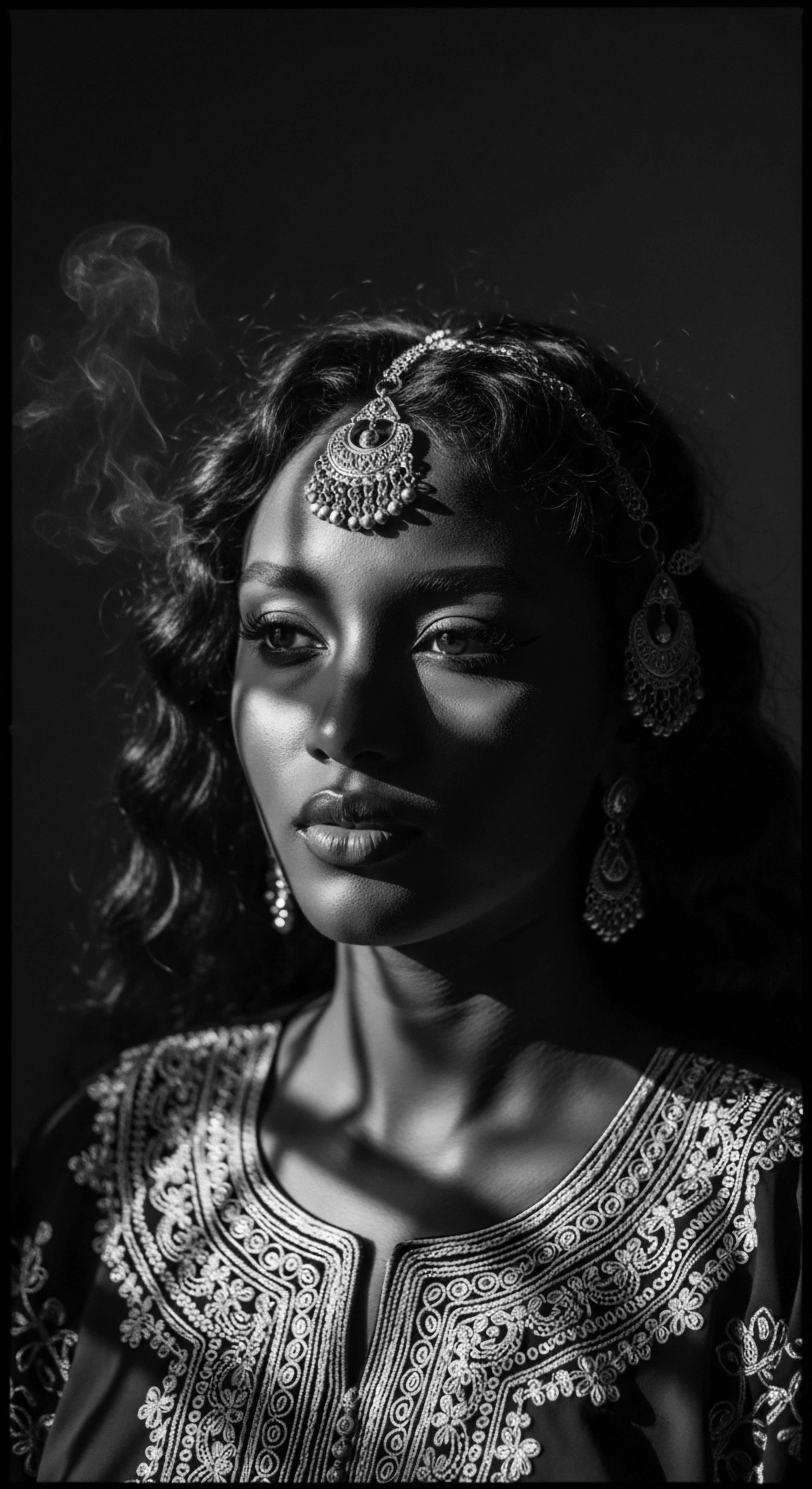
Roots
Consider for a moment the profound connection between the coil of a single strand of textured hair and the ancient earth from which our traditions sprung. Each curl, each gentle bend, holds a silent record, a memory stretching back through generations, whispered through sunlight and shadow, across continents and through trials. For those whose ancestry lies in the rich soils of Africa, or in the vibrant crossroads of diasporic identity, our hair is more than keratin and protein; it is a living archive, a direct line to ancestral wisdom.
We ask, with genuine inquiry, what biophysical reasons render this heritage-rich hair vulnerable as the sun dips below the horizon, and the world drifts into slumber? The answer resides not in deficiency, but in a delicate architecture, a marvel of natural design that, under certain conditions, requires a specific, tender response, deeply rooted in historical understanding.

The Architecture of the Strand
Textured hair, particularly that with tighter curl patterns, possesses a distinct anatomical blueprint that shapes its interaction with its surroundings. The very form of the hair follicle, nestled beneath the scalp, influences the hair shaft’s journey upwards. Rather than emerging in a perfectly round or oval cross-section, tighter curls arise from an elliptical, almost ribbon-like shape of the follicle.
This contributes to the hair shaft itself exhibiting a flatter, more elliptical cross-section, rather than a circular one typically seen in straighter hair types. This unique shape predisposes the hair to bend and twist upon itself, forming the beautiful, characteristic coils we recognize.
This inherent curvature, while visually striking, introduces points of fragility. Each curve and coil creates areas where the outermost protective layer, the Cuticle, lifts slightly. Imagine overlapping roof tiles; on a flat surface, they lie smooth and tight, but when wrapped around a tight curve, their edges might lift.
Similarly, the cuticle scales on a highly coiled strand are not as uniformly flat against the cortex as they are on straighter hair. This lifting means that the hair’s inner core, the Cortex, which contains the majority of the hair’s strength and elasticity, is more exposed to the elements.
Another significant aspect is the hair’s moisture content. Textured hair often experiences what is termed “dryness” due to its structure. Despite having a comparable lipid content to other hair types, the unique biomechanical properties, such as high curvature, make it more susceptible to moisture loss. The outer cuticle layer acts as a barrier, sealing in the hair’s natural hydration.
When these scales are raised, even minutely, the hair’s ability to retain moisture diminishes, leading to an increased rate of water evaporation. This is particularly noticeable in environments with lower humidity or during prolonged exposure to air. G. Loussouarn, I.
Lozano, S. Panhard, C. Collaudin, C. El Rawadi, and G.
Genain, Eur. J. Dermatol. 26(2), 144–154 (2016).
The distinctive elliptical shape and tight coiling of textured hair render its protective cuticle layer more prone to lifting, inviting moisture loss and external friction.

Environmental Echoes and Biophysical Realities
The vulnerability of textured hair overnight is an interplay of its unique structure and the environmental conditions it encounters. As one sleeps, particularly on absorbent surfaces like cotton pillowcases, the hair experiences two primary stressors ❉ Friction and Moisture Absorption. The constant rubbing against a pillow surface can cause the raised cuticle scales to abrade, leading to physical damage, frizz, and ultimately, breakage. This mechanical stress can be significant over several hours.
Furthermore, cotton, being a highly absorbent material, can draw moisture directly from the hair. For hair already predisposed to dryness due to its structural characteristics, this overnight moisture depletion can exacerbate its fragility, leaving it feeling rough, tangled, and less pliable upon waking. This cumulative effect of friction-induced damage and moisture loss during sleep contributes substantially to the overnight vulnerability of textured hair. It stands as a stark contrast to hair types with a flatter cuticle and more compact structure, which might glide more readily over surfaces and retain moisture with less effort.
Our ancestors, without the benefit of electron microscopes or chemical analyses, understood these vulnerabilities through lived experience and keen observation. They noticed how certain hair types reacted to dryness, how some styles provided better protection against breakage, and how vital moisture was to maintaining their hair’s strength and vibrancy. This intuitive understanding, passed down through generations, formed the bedrock of care practices that addressed these very biophysical realities, long before scientific vocabulary existed to describe them.

How Does Curl Pattern Affect Overnight Susceptibility?
The degree of curl, from loose waves to tight coils and zig-zag patterns, directly affects the hair’s overnight susceptibility. Hair with a tighter coil, categorized often as ‘kinky-curly’ types, presents more surface area for cuticle lifting at each bend. This means more points of potential friction and moisture escape. A strand that forms a tight ‘Z’ shape, for instance, has sharper angles where the cuticle is most exposed compared to a gentle ‘S’ wave.
This amplified surface exposure, when coupled with the movement during sleep, makes these hair patterns particularly susceptible to overnight damage. The historical care traditions, as we shall see, often accounted for this variability in curl morphology.

Ritual
From the very foundational understanding of textured hair’s inherent structure, a deep tradition of care rituals arose, not as mere adornment, but as a practical response to its biophysical truths. These practices, honed over centuries, formed a living heritage, a tangible manifestation of collective wisdom. They were acts of preservation, designed to guard the integrity of the hair against the very forces that threatened its vitality. For our ancestors, knowing how to care for textured hair was intertwined with community well-being, a shared responsibility and a source of communal pride.

Ancestral Wisdom and Protective Forms
The ingenuity of historical hair styling, particularly in African and diasporic communities, speaks volumes to an intimate understanding of textured hair’s needs. Protective styles were not simply aesthetic choices; they served as a vital shield against environmental stressors, including the nightly friction and moisture depletion that hair experiences during sleep. Braids, twists, and cornrows, in their myriad forms, served to compact the hair, minimizing surface exposure and thereby reducing mechanical abrasion. By gathering strands into cohesive units, these styles effectively lessened the chances of individual hair fibers rubbing against each other or against external surfaces.
Consider the meticulous process of braiding or twisting. Each segment of hair, once separate and exposed, becomes nestled within a larger, more resilient structure. This strategic bundling protects the more vulnerable lengths and ends of the hair, which are often the oldest and most susceptible to damage.
Such practices were particularly relevant in climates that could be harsh, with dry air and dusty conditions, where preserving hair’s natural moisture was paramount. The knowledge of which styles offered the most enduring protection, and how to execute them with precision, passed down from elder to youth, secured the hair’s health across generations.
Beyond preventing damage, these styles allowed for the efficient application and retention of natural emollients and conditioners. Oils extracted from local botanicals, or butters rendered from nuts and seeds, could be applied to the scalp and along the hair shafts before styling, their benefits locked in by the protective nature of the chosen form. This dual function of protection and conditioning underscores the holistic approach inherent in ancestral hair care.
Ancestral protective styles, like intricate braids and twists, were sophisticated responses to textured hair’s biophysical fragility, safeguarding against environmental strain and aiding in moisture retention.

Tools and Techniques from the Past
The tools employed in historical hair care, though simple, were profoundly effective in mitigating overnight hair vulnerability. Fingers, naturally, were the primary instruments, capable of the nuanced manipulation required for delicate detangling and precise sectioning. Wide-toothed combs, crafted from wood or bone, would have been preferred over fine-toothed varieties, minimizing breakage during the detangling process, especially before styling hair for sleep.
Here are some traditional tools and their general purposes, often used in preparation for rest:
- Fingers ❉ The most gentle tool for detangling and creating intricate sectioning for styles like cornrows or twists. Their natural warmth also aided in working in emollients.
- Wooden Combs ❉ Crafted with widely spaced teeth, these reduced snagging and breakage when working through tangled hair, a common occurrence if hair was left unprotected.
- Natural Fibers ❉ Used for tying off braids or twists, often from plants, providing a soft hold that would not abrade the hair.
| Hair State Unprotected Hair |
| Overnight Friction Resistance Low ❉ Direct contact with surfaces |
| Overnight Moisture Retention Low ❉ Rapid absorption by fabrics |
| Typical Morning State Tangled, dry, prone to frizz and breakage |
| Hair State Braids/Twists |
| Overnight Friction Resistance High ❉ Hair bundled, reduced surface area |
| Overnight Moisture Retention High ❉ Moisture sealed within style |
| Typical Morning State Defined, less tangled, retaining moisture |
| Hair State This table highlights the wisdom embedded in ancestral styling choices, directly addressing biophysical vulnerabilities. |
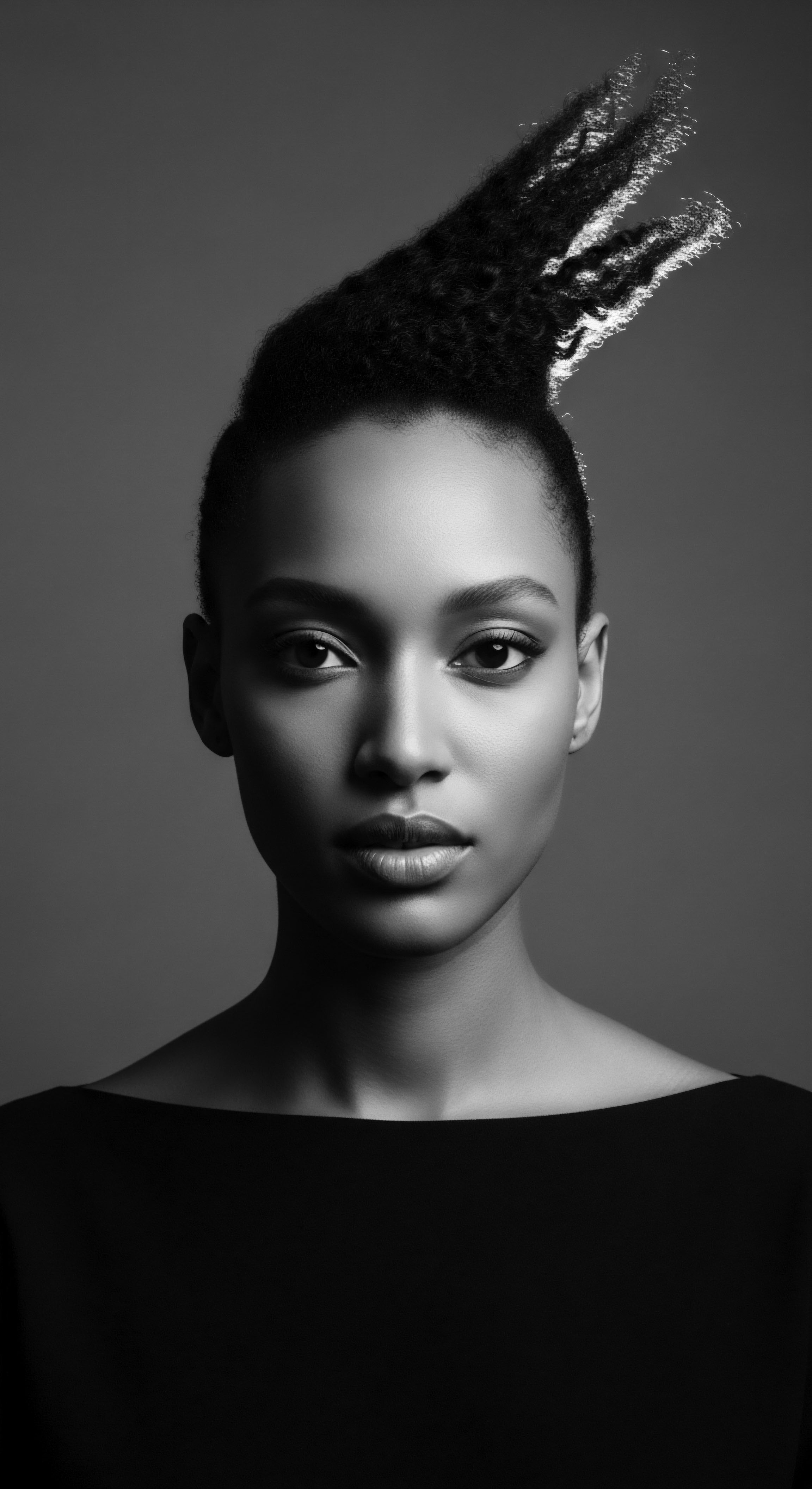
How Did Nighttime Care Evolve from Day Practices?
The distinction between daytime and nighttime hair care practices, while sometimes subtle, held significant meaning within traditional communities. During the day, hair was often styled for community gatherings, ceremonies, or daily tasks, sometimes left uncovered, displaying artistry and identity. Yet, the wisdom of night-time protection often meant a simpler, more enclosed style, or the use of specific coverings. The goal shifted from outward expression to inward preservation.
The hair, having endured the sun, wind, and daily activities, was prepared for its restorative period, a quiet act of self-care and continuity. This awareness of the hair’s need for respite and recovery during sleep speaks to a profound observational knowledge of its biophysical cycles and vulnerabilities.
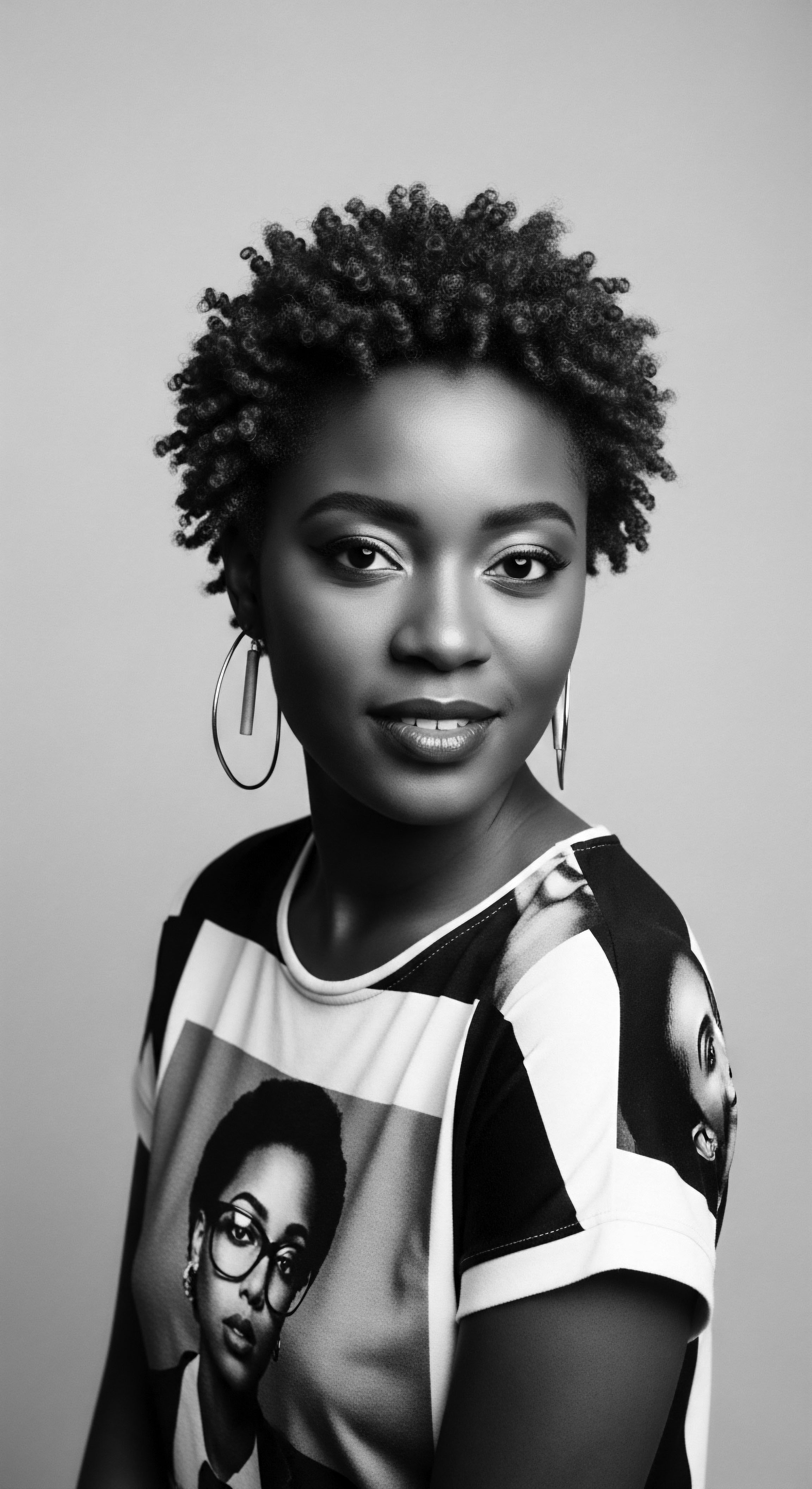
Relay
The continuity of textured hair care, passed down through generations, is a testament to resilience and adaptation. What began as an intuitive response to environmental conditions and hair’s biophysical make-up evolved into structured regimens, particularly for the sacred period of rest. The nighttime sanctuary, where hair is given respite from the day’s demands, remains a pivotal component of holistic textured hair wellness, directly addressing the vulnerabilities experienced overnight. This enduring heritage of care is a living dialogue between ancient wisdom and contemporary understanding.

The Nighttime Sanctuary ❉ Essential Sleep Protection
The nightly ritual of protecting textured hair before sleep finds deep roots in ancestral practices, long before the advent of modern hair science. Enslaved African women, for instance, in the cruel realities of the Americas, employed head coverings not solely as a mark of imposed subservience, but ingeniously, as a means of hair preservation and a clandestine expression of identity. Despite laws like the Tignon Law in 18th-century Louisiana, which compelled free women of color to cover their hair as a means of social control, these women transformed the mandated kerchiefs into artful displays, often using fine fabrics. Beyond the overt acts of rebellion and assertion of identity, these coverings also served a practical purpose ❉ shielding their delicate hair from the abrasive friction of coarse sleeping surfaces and the moisture-wicking properties of materials like raw cotton.
Byrd, A. D. & Tharps, L. L.
(2014). Hair Story ❉ Untangling the Roots of Black Hair in America. St. Martin’s Press.
This historical response to oppression subtly underscores a biophysical reality ❉ hair, when rubbed against rough surfaces, experiences mechanical stress that lifts its cuticle, causing frizz, tangles, and eventually, breakage. Cotton pillowcases, ubiquitous in many households, are highly absorbent. They act like sponges, drawing moisture from the hair throughout the night, leaving strands dry and brittle. The continuous, subtle movement of the head during sleep exacerbates this friction and moisture loss, making the hair particularly susceptible to damage.
The wisdom of using materials like silk and satin for head coverings, whether a Bonnet or a Headwrap, has been affirmed by contemporary understanding. These materials possess a smooth surface that allows hair to glide without resistance, minimizing friction and preventing the cuticle from roughening. Furthermore, silk and satin are far less absorbent than cotton, helping hair retain its vital moisture content, ensuring it remains hydrated and pliable through the night. This knowledge, once gleaned from observation and passed down orally, now stands validated by material science.
Nighttime hair protection, a practice deeply rooted in ancestral responses to textured hair’s vulnerability, safeguards against friction and moisture loss, demonstrating a timeless wisdom.

Ingredients from the Earth and Ancestral Hands
The application of specific ingredients before sleep also formed an intrinsic part of these heritage-infused rituals. Our forebears knew intuitively the nourishing properties of natural oils and butters, often applying them to the hair and scalp as the day concluded. These emollients acted as a protective barrier, reducing friction, sealing in moisture, and providing sustenance to the hair shaft.
A few examples of traditional ingredients used in nightly regimens across various African and diasporic communities:
- Shea Butter ❉ Sourced from the nuts of the African shea tree, this rich butter provided deep conditioning and a protective coating to the hair, preventing moisture escape and reducing brittleness.
- Coconut Oil ❉ A widely available and deeply penetrating oil, it was used to lubricate strands, reduce protein loss, and add a soft sheen.
- Castor Oil ❉ Known for its thick consistency, it was often applied to the scalp and hair ends to promote perceived strength and add gloss, a practice with long standing cultural credence.
These ingredients, combined with protective styling and covering, collectively formed a shield against the overnight challenges textured hair faces. This comprehensive approach allowed individuals to awaken with hair that was not only preserved but often rejuvenated, ready for the styling of the new day. The continuous legacy of these practices underscores a deep, abiding connection between heritage, health, and daily habit.

How Do Modern Practices Echo Ancient Nighttime Rituals?
The echoes of ancient nighttime rituals resound in many contemporary textured hair care practices. While commercial products now offer a vast array of specialized conditioners and serums, the underlying principles of moisture retention and friction reduction remain constant. Modern silk or satin-lined bonnets, pillowcases, and specialized sleep caps are direct descendants of the headwraps and scarves worn by our ancestors.
The very act of preparing hair for sleep, be it through braiding, twisting, or simply covering, is a cultural memory, a living practice that continues to honor the biophysical needs of textured hair through the lens of generational wisdom. The science of today validates the intuitive knowledge of yesterday, bridging past and present in a harmonious continuum of care.
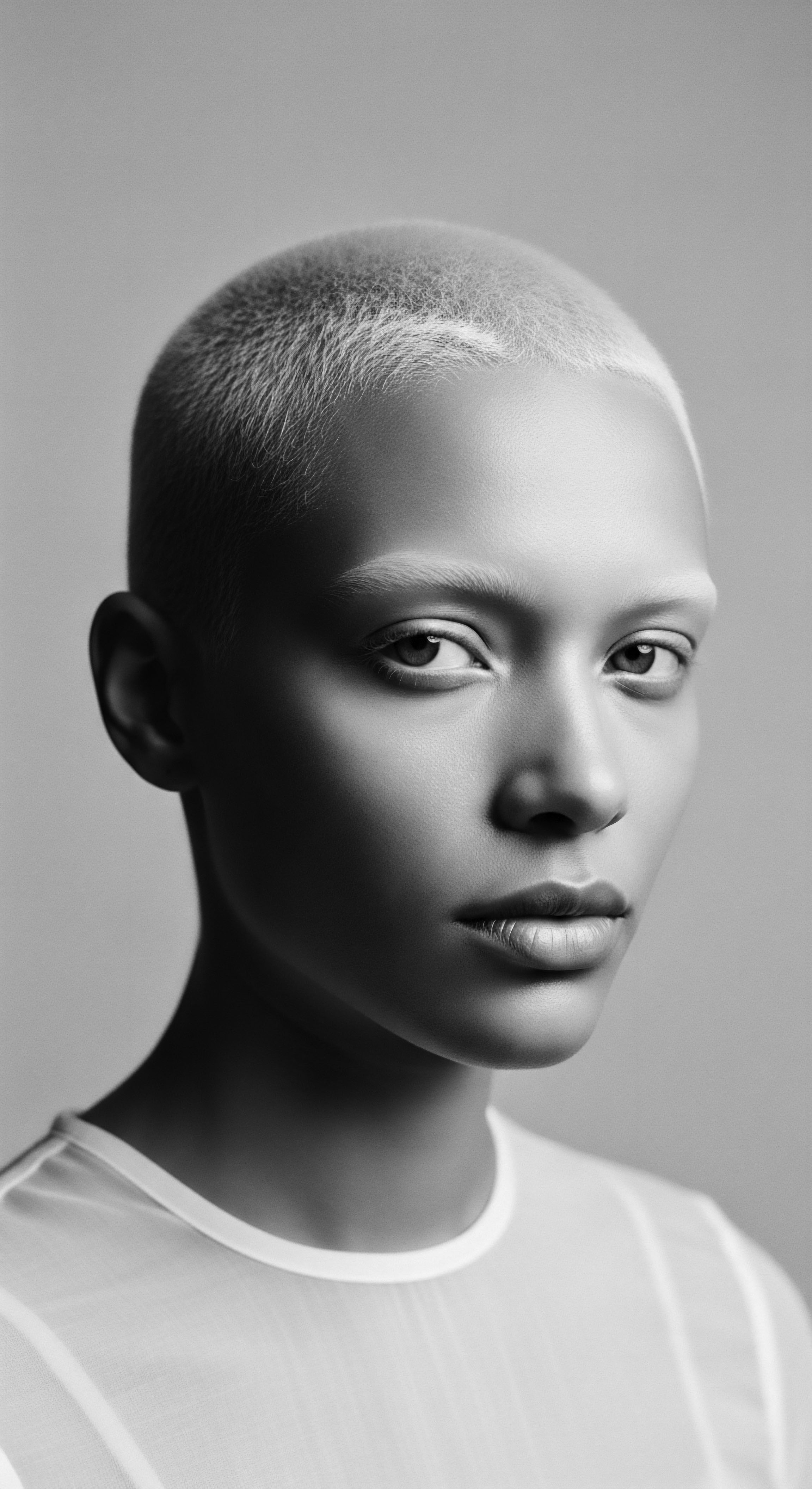
Reflection
To truly grasp the biophysical reasons that make textured hair vulnerable overnight is to journey beyond mere scientific classification. It is to walk a path illuminated by the enduring spirit of textured hair heritage, to hear the silent wisdom passed through generations. Each coil and curve, though presenting specific care needs, carries a profound beauty, a testament to ancestral fortitude. The collective experiences of Black and mixed-race communities, their innovative responses to challenges, and their unwavering dedication to hair wellness, have crafted a living library of care.
The understanding of overnight vulnerability is not a lament of weakness but an ode to adaptability. It speaks to the ingenuity born from necessity, where protective styles and nightly coverings became not just practical tools, but symbols of identity, resistance, and self-worth. This legacy, woven into the very soul of a strand, reminds us that the care of textured hair is an act of historical reverence, a daily affirmation of belonging, and a vibrant step toward shaping a future where every texture is celebrated in its full, radiant splendor. It is a continuous narrative of knowing, preserving, and honoring.
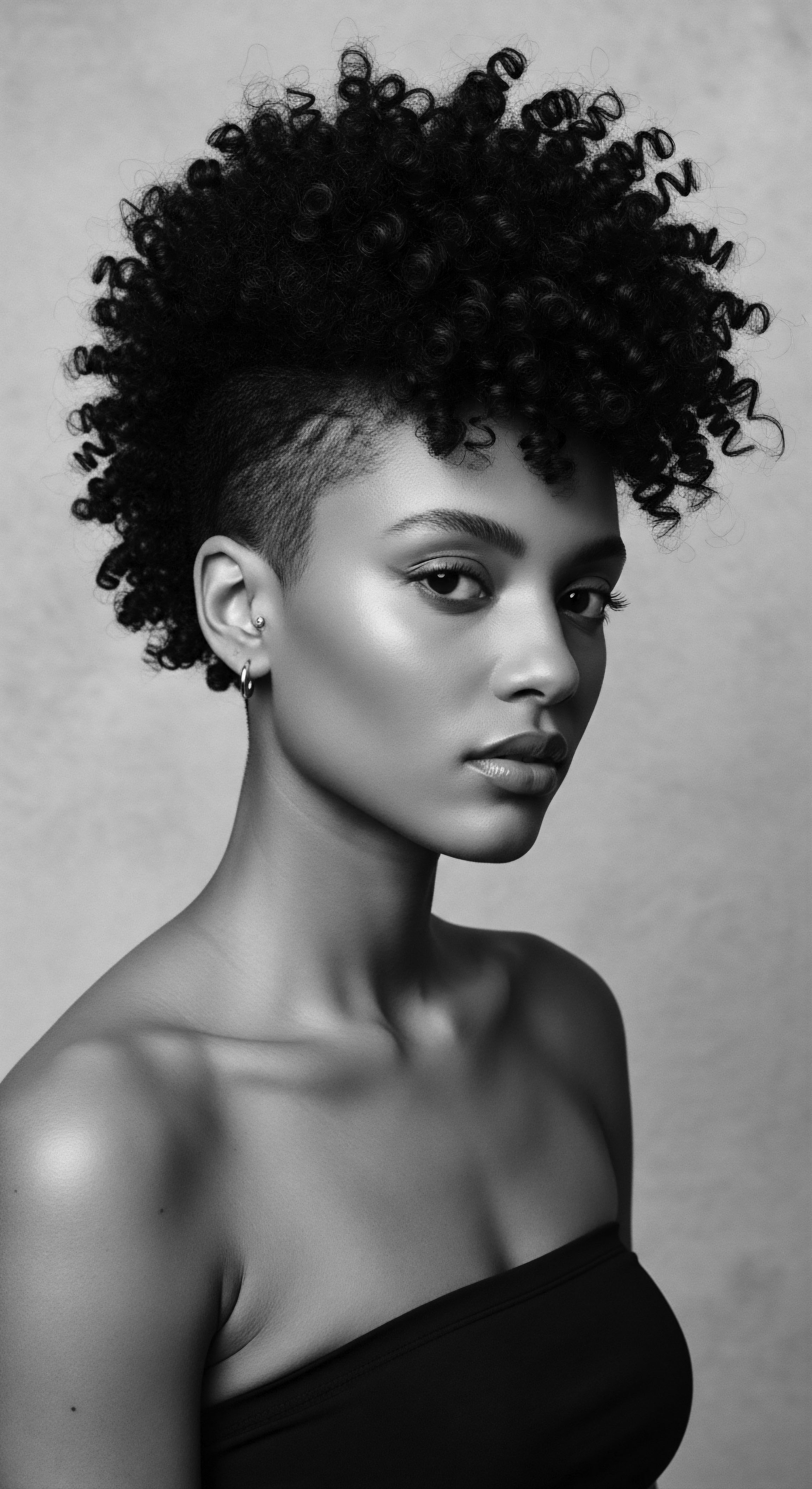
References
- Byrd, A. D. & Tharps, L. L. (2014). Hair Story ❉ Untangling the Roots of Black Hair in America. St. Martin’s Press.
- Camacho-Bragado, G. A. Balooch, G. Dixon-Parks, F. Porter, C. & Bryant, H. (2015). Understanding breakage in curly hair. British Journal of Dermatology, 173(Suppl. 2), 10-16.
- Loussouarn, G. (2001). African hair growth parameters. British Journal of Dermatology, 145(2), 294–297.
- Loussouarn, G. Lozano, I. Panhard, S. Collaudin, C. El Rawadi, C. & Genain, G. (2016). Diversity in human hair growth, diameter, colour and shape. An in vivo study on young adults from 24 different ethnic groups observed in the five continents. European Journal of Dermatology, 26(2), 144–154.
- Robbins, C. (2012). Chemical and Physical Behavior of Human Hair. Springer, Heidelberg, Germany.
- Klein, S. (Ed.). (2000). Creole ❉ The History and Legacy of Louisiana’s Free People of Color. Louisiana State University Press.
